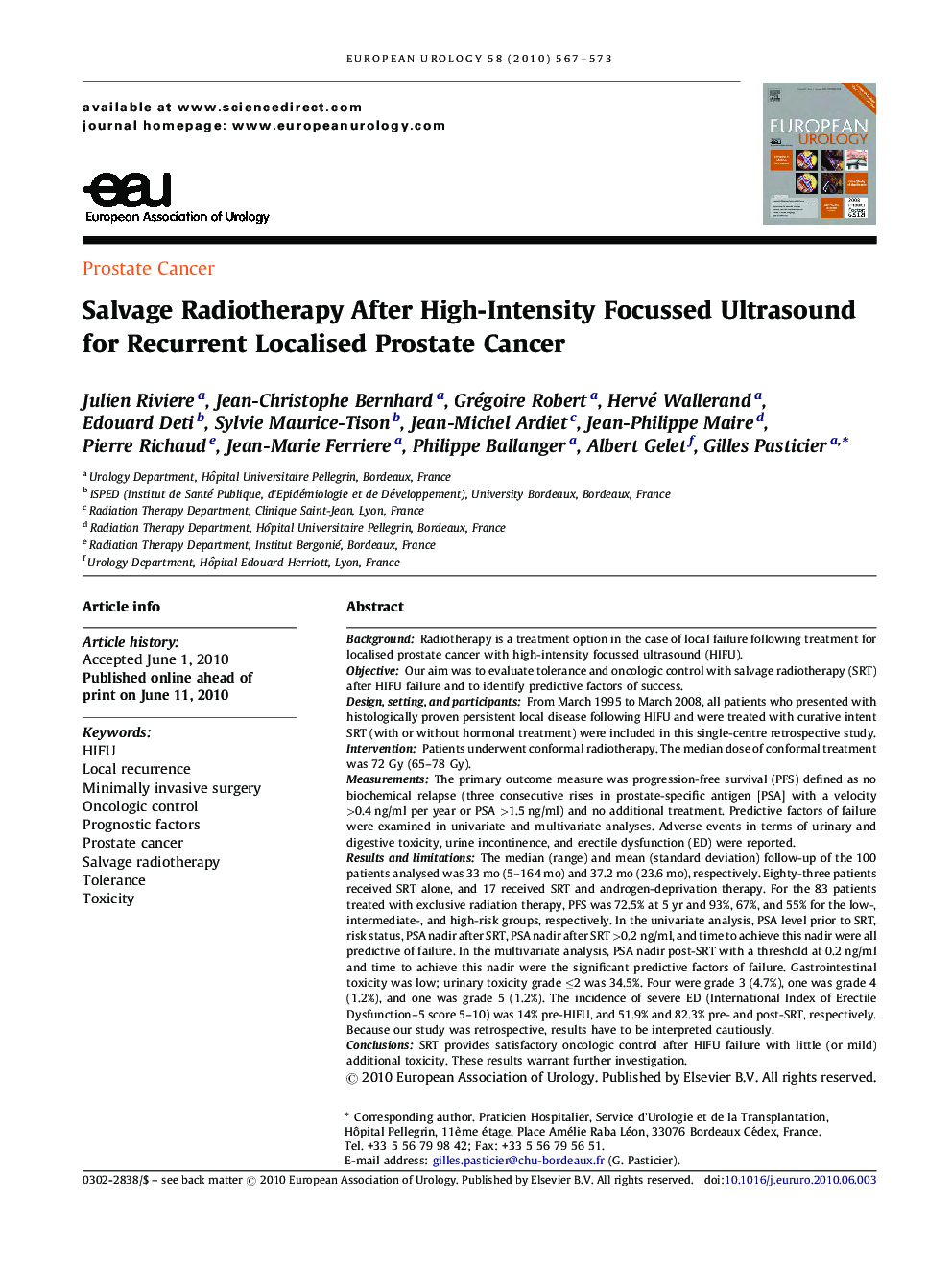| کد مقاله | کد نشریه | سال انتشار | مقاله انگلیسی | نسخه تمام متن |
|---|---|---|---|---|
| 3927535 | 1253183 | 2010 | 7 صفحه PDF | دانلود رایگان |

BackgroundRadiotherapy is a treatment option in the case of local failure following treatment for localised prostate cancer with high-intensity focussed ultrasound (HIFU).ObjectiveOur aim was to evaluate tolerance and oncologic control with salvage radiotherapy (SRT) after HIFU failure and to identify predictive factors of success.Design, setting, and participantsFrom March 1995 to March 2008, all patients who presented with histologically proven persistent local disease following HIFU and were treated with curative intent SRT (with or without hormonal treatment) were included in this single-centre retrospective study.InterventionPatients underwent conformal radiotherapy. The median dose of conformal treatment was 72 Gy (65–78 Gy).MeasurementsThe primary outcome measure was progression-free survival (PFS) defined as no biochemical relapse (three consecutive rises in prostate-specific antigen [PSA] with a velocity >0.4 ng/ml per year or PSA >1.5 ng/ml) and no additional treatment. Predictive factors of failure were examined in univariate and multivariate analyses. Adverse events in terms of urinary and digestive toxicity, urine incontinence, and erectile dysfunction (ED) were reported.Results and limitationsThe median (range) and mean (standard deviation) follow-up of the 100 patients analysed was 33 mo (5–164 mo) and 37.2 mo (23.6 mo), respectively. Eighty-three patients received SRT alone, and 17 received SRT and androgen-deprivation therapy. For the 83 patients treated with exclusive radiation therapy, PFS was 72.5% at 5 yr and 93%, 67%, and 55% for the low-, intermediate-, and high-risk groups, respectively. In the univariate analysis, PSA level prior to SRT, risk status, PSA nadir after SRT, PSA nadir after SRT >0.2 ng/ml, and time to achieve this nadir were all predictive of failure. In the multivariate analysis, PSA nadir post-SRT with a threshold at 0.2 ng/ml and time to achieve this nadir were the significant predictive factors of failure. Gastrointestinal toxicity was low; urinary toxicity grade ≤2 was 34.5%. Four were grade 3 (4.7%), one was grade 4 (1.2%), and one was grade 5 (1.2%). The incidence of severe ED (International Index of Erectile Dysfunction–5 score 5–10) was 14% pre-HIFU, and 51.9% and 82.3% pre- and post-SRT, respectively. Because our study was retrospective, results have to be interpreted cautiously.ConclusionsSRT provides satisfactory oncologic control after HIFU failure with little (or mild) additional toxicity. These results warrant further investigation.
Journal: European Urology - Volume 58, Issue 4, October 2010, Pages 567–573